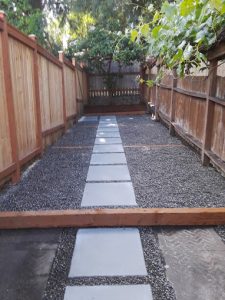How to Deal with Moss in Your Seattle Lawn: A Step-by-Step Guide
Hey Seattle homeowners! If you’ve noticed a thick, green carpet of moss creeping into your yard, don’t panic—we can fix this. You’re not alone. Moss loves our cool, damp climate, and it’s a common issue in the Pacific Northwest. It happens to the best of us. But don’t worry, I’m here to help you take back control of your lawn.
Let’s break down the steps to remove moss and prevent it from coming back.
Why Moss Loves Seattle Lawns
Moss thrives here because of our cool, wet weather—the perfect environment for it to spread. Moss loves shade, moisture, and compacted soil. If your lawn struggles with poor drainage, acidic soil, or weak grass, moss will take full advantage of it.
Before we start removing the moss, let’s figure out why it’s growing in the first place.
Step 1: Diagnose the Problem
Moss doesn’t just appear out of nowhere—it’s usually a sign of an underlying issue with your lawn. Take a walk around your yard and ask yourself:
- Is your lawn getting enough sunlight?
- If large trees or structures block sunlight, moss can easily spread.
- Do you have drainage issues?
- Pools of standing water encourage moss growth.
- Is your soil compacted or lacking nutrients?
- Hard, compacted soil prevents grass from growing deep roots, giving moss the upper hand.
Once you’ve figured out the root cause, you’ll be in a better position to fix it for good.
Step 2: Remove the Moss
Now that we know why moss is there, let’s get rid of it.
Manual Removal
For small patches, grab a spring-tine rake and pull out the moss by hand. It’s labor-intensive but effective for minor moss issues.
Moss Killer
For larger areas, use a moss control product containing iron sulfate or ferrous sulfate. These products kill moss without harming your grass. Apply as directed, and once the moss turns black (meaning it’s dead), rake it out.
Lawn Scarifier (Dethatcher)
If moss is widespread, consider renting a lawn scarifier. This machine removes moss and aerates the soil at the same time, giving your grass a better chance to grow.

Step 3: Fix the Root Causes
Removing the moss is only half the battle—now we need to stop it from coming back.
Aerate the Lawn
Compacted soil holds moisture, making it perfect for moss. Aerating loosens the soil, improves drainage, and allows grass roots to grow deeper.
Improve Drainage
If your lawn has standing water, you may need to:
- Add topsoil to level low areas
- Install French drains or dry creek beds for better water flow
Adjust the Soil pH
Moss loves acidic soil, but grass prefers a neutral pH (6.0-7.0). Test your soil with a pH kit (available at most garden centers). If your soil is too acidic, apply lime to balance it.
Fertilize and Overseed
A weak lawn allows moss to take over.
- Apply a balanced fertilizer to strengthen your grass.
- Overseed bare spots to thicken the lawn, making it harder for moss to grow back.
Step 4: Prevent Future Moss Growth
Now that your lawn is moss-free, let’s keep it that way.
Increase Sunlight
Trim back tree branches and shrubs to allow more sunlight to reach your lawn.
Mow at the Right Height
Keep your grass 2.5-3 inches tall. Taller grass shades the soil, reducing moss growth.
Water Properly
Deep, infrequent watering is better than frequent shallow watering. Let the soil dry out between waterings—moss loves constant moisture.
Fertilize Regularly
A well-fed lawn is a strong lawn. Apply fertilizer 3-4 times a year to keep your grass lush and resistant to moss.

Moss Isn’t All Bad… But Not in Your Lawn
Moss has its place in nature—it’s soft, lush, and thrives in shady, damp forests. But when it starts taking over your yard, it’s time to take action.
By diagnosing the problem, removing the moss, and fixing the root causes, you’ll be on your way to a healthy, moss-free lawn. Whether you need moss killer, aeration, or overseeding, I can help you create a lawn that stands up to Seattle’s wet, shady weather.
Summary Notes
- Moss thrives in Seattle’s damp, cool weather—especially in shady, compacted, or poorly drained areas.
- Removal methods include manual raking, moss killer (iron sulfate), or lawn scarification (dethatching).
- Fix the root cause by aerating, improving drainage, adjusting pH, and fertilizing/overseeding your lawn.
- Prevent moss from returning by increasing sunlight, mowing properly, watering less often, and fertilizing regularly.
Need Help? Call Mr. Lee!
If moss is taking over your lawn, I can help! Whether you need moss removal, aeration, drainage solutions, or full lawn care, I’ve got you covered.
Let’s get your lawn looking its best—give me a call today!
See you in the yard!
— Mr. Lee



















